Rising amid flat farmland, Asukayama had long been an untended haunt of foxes and their small prey when, in 1720, Yoshimune Tokugawa, the eighth shogun to rule in Edo (present-day Tokyo), had the hilly upland planted with 1,200 cherry trees, 100 maples and 100 pines, to create a public park for flower-viewing. It still draws spectators today.
Though the most plentiful Somei Yoshino cherry trees are already past perfection, I head off to Kita Ward in hopes of enjoying displays of some later-blooming varieties.
Exiting from the Namboku Line's Oji Station, I then tunnel below multiple train tracks, emerging on an inviting little street sprinkled with pink petals. At a tiny stand with a purple noren entrance curtain that reads "Ogiya," I spy an elfin man selling two plastic trays of tamagoyaki (rolled omelets).
Is this all he has to offer?
"Well, Ogiya has been selling tamagoyaki since 1648," Takehiko Hayafune counters, "and I'm the 14th generation to do so, so I suppose it's enough." Convinced, I snap up one of the trays minutes before a local comes and claims the last.
As Hayafune bags the slabs of still-warm omelet, I note that the family crest on the noren curtain is a butterfly with oddly rigid-seeming wings. "Look carefully," Hayafune says. "The wings are folding fans, because Ogiya means 'fan house.' " Once a premier teahouse on the ryotei bansuke — the Edo equivalent of the Michelin ranking — Ogiya has shrunk over the centuries but has hung on to its original location. And when Hayafune hauls out his album of Edo woodblock prints and silver-gelatin photos, I see ink sketches of Ogiya perched beside the Otonashi River.
Now diverted, the Otonashi was once acclaimed for the delicious tea made from its waters, Hayafune tells me. After World War II, pollution and silt deposits made it necessary to redesign the area.
Wandering like an Edokko (citizen of Old Edo) back when Ogiya packed lunches for geisha and royalty alike, I find Otonashi Shinsui Park. It's a pointillist paradise of fallen petals. A wooden water wheel presides over a trickle of filtered water and blissful spring revelers sprawl where the Otonashi river once flowed.
Among the picnickers, I meet Kihachi Wakamatsu, 78, a master of the delicate taketombo (bamboo dragonfly) — a toy that flies when spun between the hands. Wakamatsu has been crafting them for 50 years. "The secret is an inlaid bamboo backbone," he confides — saying that as it takes him at least five hours to make one toy, they are not exactly cheap. I buy one of his bargain models, molded from a recycled vegetable juice box. Because I look like the kind of person who will lose her toy quickly, he gives me an extra one for free. Both bear his miniscule calligraphic signature.
Next, I stop to chat with 65-year-old Rikuro Miyake, selling what appear to be aluminum flowers. It takes a few seconds to realize his wares have been crafted from cut and woven beer cans. "They're ¥100," Miyake says, plucking a can from an odiferous garbage bag brimming with raw materials. "And I'm the only one in Tokyo who makes these." As he snips at the can, Miyake sells several works to ohanami (flower-viewing) smokers, and women who appreciate his recycling spirit. I finally break down and buy one too, even though I don't smoke.
Now carrying one omelet, two bamboo dragonflies and a beer-can ashtray, I figure it's time to stop the madness and seek higher ground. A petal-coated flight of steps beckons. Halfway up, a painter slashing broad strokes on a canvas gives me pause for a double take, so wild and unusual is his work. It turns out that Kenji Akahira, 61, is a serious artist who has shown in Japan and abroad and is preparing for his next exhibition this May in Yokohama.
At the path's summit, an alleyway of blooming camellias opens onto Oji Shrine. Although it was rebuilt after World War II, records reveal that a feudal lord named Gonnokami Kiyomitsu Toyoshima dubbed the shrine "Oji" in 1322. Designated in 1868 by the newly restored Meiji Emperor as one of Tokyo's 10 most important shrines, it is a tidy, somewhat conventional site except for a small side-shrine which turns out to be dedicated to — holy hirsuteness ! — a kami no kami (god of hair). A local informs me that barbers, stylists, wig-makers and stage personalities often pay respects here.
This same local also kindly points out a street that dead-ends at Oji's Oinari Shrine, one of the oldest in the Kanto region, and which dates from the Heian Period (794-1185).
Foxes serve as messengers and guardians for Oinari, the god of rice, fertility, farming and commerce — and this shrine has a skulk of them. Some smirk, others leer and many of the oldest suffer mangled muzzles, but their vigilance has kept the main shrine, built in 1808, pristine and colorful.
A tiny sign suggests that when the door is open, visitors may enter. I'm in luck, and when I glance upward the ceiling takes my breath away: A vibrant ho-o (phoenix) encircles a gold-leaf moon, flanked by dozens of delicate bird and flower paintings.
The rest of the shrine complex, which climbs the cliffside and features fox shrines in gradually diminishing sizes, is just as impressive. The penultimate shrine houses a boulder on a pillow; legend has it that if you can lift the boulder, your wish will be granted. I lift it, to the amazement of several visitors. My wish is to not stumble on the final flight of stairs to the last shrine, built at the opening of a small cave swirling darkly off into the cliff interior. Wish granted.
Back at street level, I stroll three minutes further to find Nanushi-no-Taki Park. Water from the Shakuji River (originating in Nerima Ward) used to spill over this area's cliffs in no fewer than seven falls, three of which splashed down at Oinari Shrine, while four others — including a "female waterfall" and a "male waterfall" — used to animate the gardens of nanushi (village headman) Magohachi Hatano.
Designed in the 1850s, and officially opened to the public after World War II, the park today pumps water over the falls, and when I visit only the male one is in operation, but it is still worth the trip. I retrace my steps around the garden's multilevel tapestry of brooklets, maples, laurels and mossy petal-strewn paths. At a pavilion, in utter quiet and seclusion, I savor Ogiya's sweet omelet. I almost forget about Asukayama.
But, once fortified, I find my way back to where the Toden-Arakawa streetcar line passes in front of the cherry-treed hills — Asukayama, so unlike the sequestered quiet of Nanushi-no-Taki Park, swarms with petal-dotted parties seated on blue plastic tarps.
The hill vantage takes buildings out of the picture when viewing the blossoms, so shutterbugs abound. There's drinking, dancing and children frolicking around a playground stocked with a life-size locomotive, a concrete castle and an elephant.
Flowers apart, three museums — the Oji Paper Museum, the Kita Ward Asukayama Museum and the Eiichi Shibusawa Memorial Museum, named for one of Japan's premier financiers — add educational entertainment. Shogun Yoshimune Tokugawa's gift to the public ought to inspire our current leaders to leave such graceful legacies.
As dusk descends, I find a little-used back exit to Asukayama — a fox run down old stone steps to a congregation of train tracks. Spying the rusty pedestrian overpass, I climb it and note a guy standing there, as though in a trance, next to a small stepladder. "Uh-oh," I say under my breath, fearing I may have happened upon an intended suicide — but then I notice his camera.
"The EF 81-81 is about to pass here," he explains when I ask. The what? "It's the engine that used to haul the Emperor's train," he says. "And it almost never comes out." I decide to wait with him. Petals drift in the failing light and dozens of trains pass. We wait 30 minutes. Finally, just as I am ready to give up, the red locomotive appears. We click away, thrilled to have outfoxed impatience.
After parting ways with Mr. Anonymous Trainspotter (who said he feared ridicule from colleagues if he gave me his name), this Kit (who fears only hunters) heads for the den.



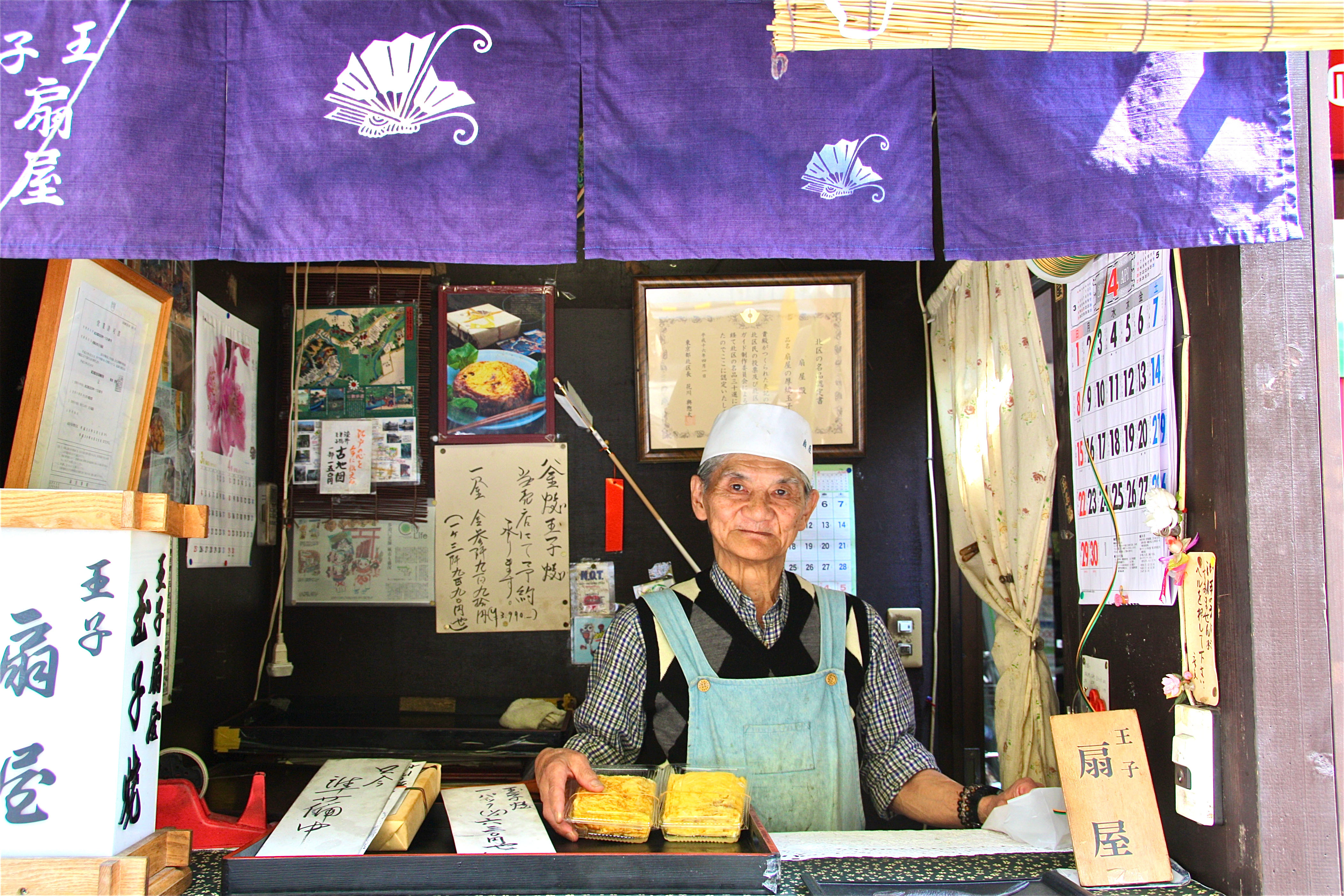
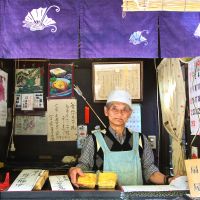
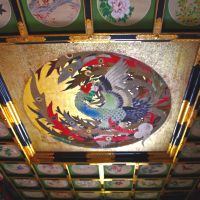
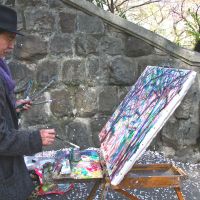
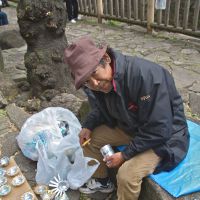
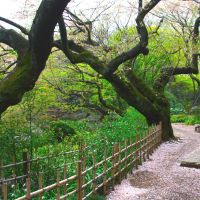
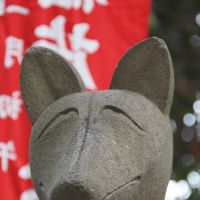















With your current subscription plan you can comment on stories. However, before writing your first comment, please create a display name in the Profile section of your subscriber account page.